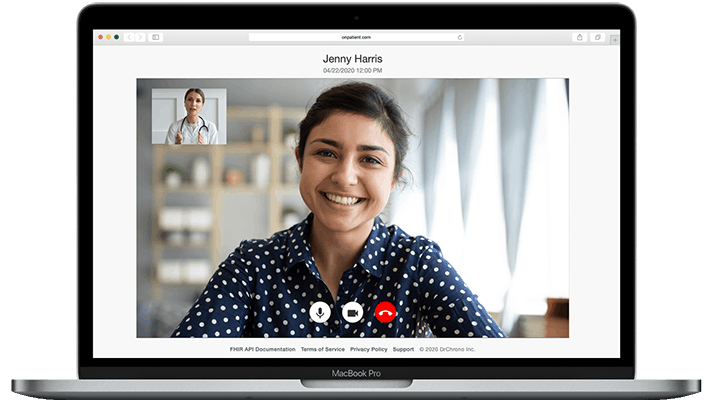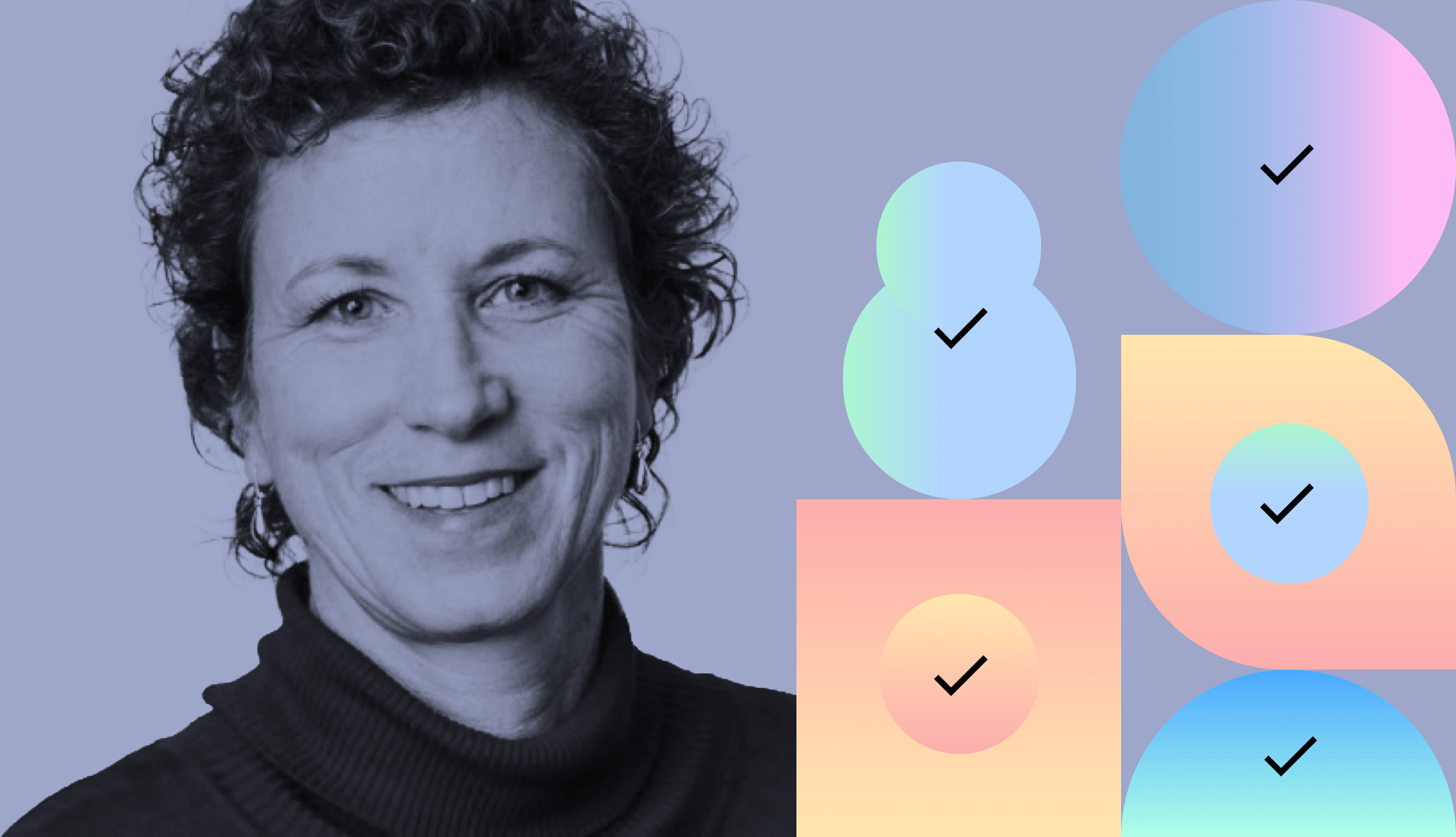Words at work
– 7 min read
Pivoting in the pandemic: how a medical software leader wins with telehealthcare

Talk about acting quickly during the pandemic. When DrChrono’s customers — thousands of doctors, medical specialists, and healthcare providers — could no longer safely operate from their offices, their engineering team immediately started building a telehealth platform. DrChrono launched their new technology on May 4, 2020, which seems like nearly forever ago now.
DrChrono’s new technology enables their customers to see their patients remotely, a critical part of staying safe and staying in business during the pandemic. “Launching telehealthcare services meant that we’d see a slowdown on other feature development, bug fixes, and engineering projects our customers were waiting for,” explains Wendy Pochop, director of customer experience. “We changed our messaging to manage those expectations, help prepare our customers for telehealth, and educate them so they can successfully use the technology.”
DrChrono’s conversations with customers have changed significantly since the onset of the pandemic. “So many service providers are fighting for survival right now — they’re not thinking about growth or finding more value in their software solutions,” Pochop says. “We want to help customers figure out how to run their businesses as smoothly as possible during all of this uncertainty, and just keep their doors open. We can get back to growth and adoption conversations later.”

Pochop manages 45 people — a combination of U.S. team members and offshore implementation and support partners. DrChrono’s customer experience team provides ongoing proactive support that customers need to use our software and grow their businesses. Pochop works with implementation services and customer support teams to build and refine strategies and processes that help customers successfully onboard with DrChrono software as well as partners, and DrChrono’s services.
Here’s a slice of our conversation from May 2020:
What kinds of healthcare do DrChrono customers specialize in, and how are they doing now during the pandemic?
We’ve got customers in all the practice group specialties, including allergy and immunology, ambulatory surgery centers, cardiology, dermatology, endocrinology, internal medicine, family medicine, gastroenterology, OBGYN, ophthalmology, optometry, orthopedics, sports and physical medicine, pain management, plastic surgery, psychiatry, urology, urgent care and emergency medicine, alternative medicine, chiropractic, physical therapy, podiatry, and mental health.
Our customers are really struggling right now. Many of them — especially those in non-MD specialities such as alternative medicine, chiropractic, physical therapy, podiatry, and mental health — had to close their doors and stop taking appointments as states started to roll out stay-at-home orders.
Many of our customers haven’t been able to see patients for months, and some believe they’ll be closed for at least another month. This has created financial hardships for many of our customers.
We also have many customers who are on the front lines in the COVID-19 fight. They’re struggling to keep themselves, their families, and their loved ones safe while also fighting to keep their businesses.
How are things going for you and DrChrono’s customer experience team since the onset of the pandemic?
We anticipated that we’d see a significant decrease in both support tickets and implementations because many of our customers could no longer see patients, but we’ve been pleasantly surprised that our volumes have been pretty consistent.
The main difference now is the types of requests we receive. Our clients are starting to focus on projects that will allow them to see customers virtually, and they’re looking for education and support to get up and running with our telehealth programs and our partner programs. For many DrChrono customers, this is the first time they’ve been able to take advantage of virtual visits, so everything is new and they’ve got lots of questions.
What are your team’s top priorities now — are they different than pre–COVID-19?
In support, we’re rolling out online chat. This was something that we were planning to do in 2020, but now that so many of our customers are on the front lines of COVID-19, it’s important that they’re able to get immediate answers to their questions. We’re already starting to see great adoption from customers who have early access.
We’re also working on more self-service options for customers, both during implementation and once they move to support. We’re producing more video content, surfacing more educational content, and working on more automation that will allow customers to manage their own onboarding and training, get help when and where they need it, and help them get more value from their solutions.
These were all goals for 2020, but we’ve shuffled some of our priorities to focus on these right now.
What new ways of working have worked well for you and your team? Are there any particular approaches or kinds of messaging that you’ve found helpful when communicating with customers?
Our entire team has empathy in spades. Our customer base is incredibly passionate and has so many ideas about how to improve our software. Since we’ve shifted our focus, we’re having to have a lot of conversations about putting requests on hold. We’re trying to be as empathetic and transparent as possible, and we’re trying to help customers figure out how to work within the bounds of the issue for a little while longer.
But mostly, we just want to focus on helping them get through this period of uncertainty in the best way possible, through telehealth adoption, etc.

How does Writer help DrChrono?
We chose Writer as a communications partner because we want to standardize our brand and make sure that no matter which DrChrono team member, wherever they were in the world, was providing a consistent, high quality of service, with a consistent message. We also wanted our team members to spend less time thinking about being “on brand” and more time focusing on just taking care of our customers the best way that they know how.
Wendy Pochop’s top 3 tips to change customer service and support during the pandemic
1. Meet your customers where they are today
Right now, our customers are fighting for their very survival, so we’re working hard to help them resume appointments and see their customers virtually. Understand what their “right now” goals are and provide them with all of the information and education they need to meet those goals.
2. Remove the barriers to your customers’ success
Our customers are on the front lines, fighting COVID-19, so we’re working hard to make their access to answers and help as easy as possible. We’re trying to remove any barriers that will slow them down — through things like chat answerbots, self-service onboarding and training, and more educational resources.
3. Listen to your customers
They’ll tell you what they need right now, and it’s important that you meet them where they are. Any plans that you had that aren’t focused on helping them survive and keep their businesses alive and income coming in the door can wait – they’ll still be there when the pandemic is over. And you’ll still have customers that are excited to work on those initiatives with you!







